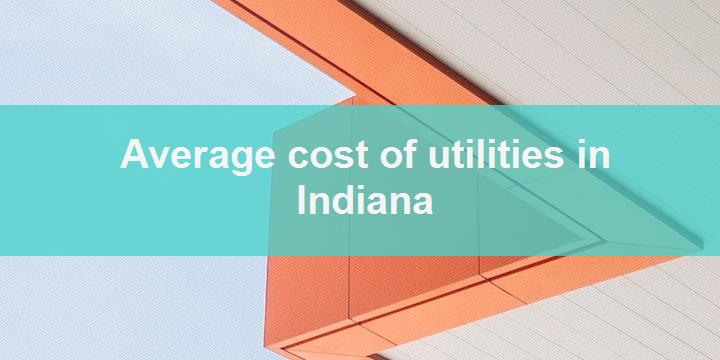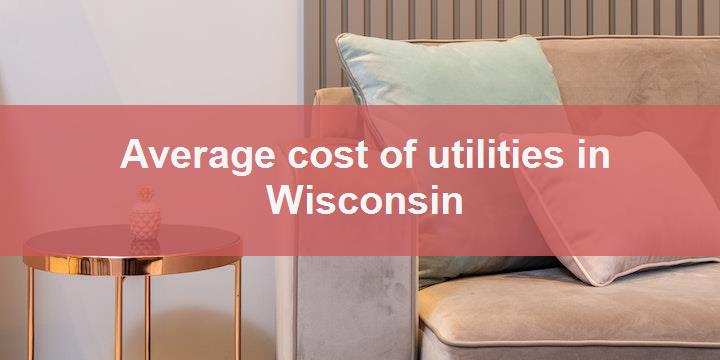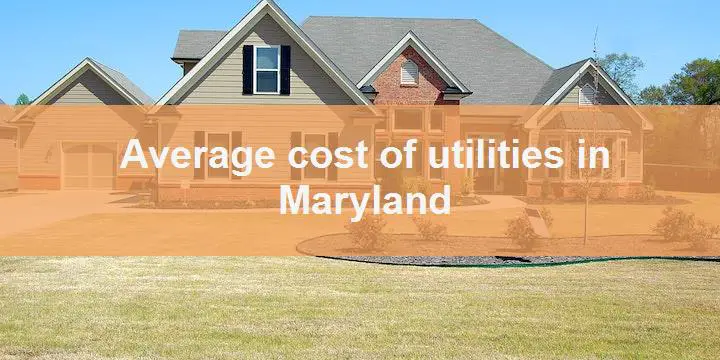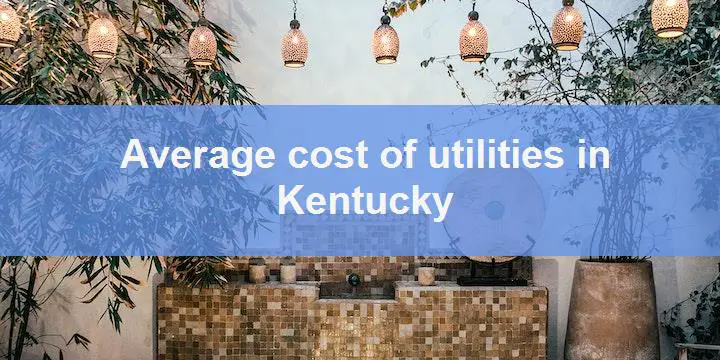Understanding the average cost of utilities in Indiana is essential for residents to effectively plan their household budgets. For a typical family of three living in a single-family home with standard appliances year-round, the average cost of utilities in Indiana is $558.18 in 2025. Indiana’s diverse climate, with its hot summers and cold winters, plays a significant role in determining utility expenses. In this article, we’ll break down the costs associated with various household configurations and seasonal usage, giving you a comprehensive view of utility expenses in Indiana.
Average Electric Bill in Indiana
Electricity costs make up a significant portion of household utility expenses in Indiana. In 2025, the average electric bill for a family of three living in a single-family home is $151.11. Due to Indiana’s fluctuating climate—cold winters and hot summers—electricity usage varies throughout the year.
Here’s how seasonal electricity consumption impacts costs:
- Winter: Heating systems, along with essential appliances like refrigerators, washers, and dryers, contribute to higher energy consumption ($181.72).
- Summer: Air conditioning usage spikes electricity bills, along with other everyday appliances ($120.50).
Indiana vs. Kentucky: Summer Energy Cost Comparison
Electricity costs can vary between states due to factors like infrastructure, climate, and energy sources. Below is a comparison of electricity expenses for a large single-family home with four people during the summer in Indiana and Kentucky:
| Criteria | Indiana | Kentucky |
|---|---|---|
| Total Consumption (kWh) | 862.12 kWh | |
| Electricity Rate (cents/kWh) | 14.93 ¢/kWh | 13.04 ¢/kWh |
| Estimated Monthly Cost | $128.71 | $112.42 |
| Detailed Cost Breakdown | ||
| Base Usage: 412.12 kWh | $61.53 | $53.74 |
| Refrigerator: 120 kWh | $17.92 | $15.65 |
| Air Conditioner: 240 kWh | $35.83 | $31.3 |
| Clothes Dryer: 90 kWh | $13.44 | $11.74 |
| Indiana estimated monthly cost is higher than Kentucky by 14.49%. | ||
Comparing Indiana’s summer electricity costs with Kentucky’s provides valuable insights into regional energy efficiency, pricing structures, and potential savings strategies.
Historical Electricity Price Trends in Indiana
The above chart illustrates electricity price trends for large single-family homes in Indiana over the years. Analyzing these fluctuations helps homeowners anticipate future cost changes and explore energy-saving strategies.
Comparison of Electricity Costs Across States
Here is a detailed comparison of electricity costs across various states, considering different household types and seasons. This table offers a comprehensive view of utility expenses.
| State | People | Household Type | Season | Appliances | Electric Monthly Bill |
|---|---|---|---|---|---|
| New York | 3 | One-bedroom apartment | Summer | Fridge, AC, Dryer |
$148.77 |
| California | 4 | Single-family large | Winter | Heater, Dryer, Fridge |
$407.08 |
| Texas | 3 | Townhouse | Winter | Heater, Dryer, Fridge |
$168.56 |
| Florida | 3 | Single-family small | Summer | Fridge, AC, Washer |
$102.05 |
| Georgia | 2 | Studio | Winter | Heater, Fridge |
$123.20 |
| Ohio | 3 | Two-bedroom apartment | Summer | Fridge, AC, Washer |
$99.55 |
| Indiana | 2 | Townhouse | Summer | Fridge, AC, Washer |
$98.91 |
For a more detailed and personalized utility expense estimate, check out our Electricity Bill Calculator. Adjust the parameters to match your household specifics and get an accurate estimate tailored to your needs.
Average Gas Bill in Indiana
Managing utility costs effectively starts with understanding gas expenses, especially in a state with a varied climate like Indiana. In 2025, the average gas bill for a family of three living in a single-family home in Indiana is $159.75. Seasonal temperature fluctuations play a crucial role in determining overall gas usage and costs.
Gas consumption varies based on the time of year:
- Winter: Home heating significantly increases gas usage, along with appliances like water heaters, stoves, and ovens ($234.00).
- Summer: While heating costs decrease, gas-powered grills, water heaters, and cooking appliances still contribute to overall usage ($85.50).
Indiana vs. Kentucky: A Summer Gas Usage Comparison
Gas costs can differ significantly between states due to climate conditions, infrastructure, and utility providers. The table below compares the average gas expenses for a large single-family home with four people during the summer in Indiana and Kentucky:
Gas Bill Comparison Overview
| Criteria | Indiana | Kentucky | Avg. USA |
|---|---|---|---|
| Total Consumption (MCF) | 6.99 MCF | ||
| Gas Rate ($/MCF) | $14.61 | $19.74 | $17.73 |
| Estimated Monthly Cost | $102.15 | $138.03 | $123.97 |
| Appliance Cost Breakdown | |||
| Outdoor Grill | $8.06 | $10.90 | $9.79 |
| Water Heater | $59.14 | $79.91 | $71.77 |
| Gas Stove | $13.44 | $18.16 | $16.31 |
| Gas Oven | $21.51 | $29.06 | $26.10 |
| Indiana's estimated monthly cost is lower than Kentucky by 25.99%. | |||
| Indiana's estimated monthly cost is lower than the Avg. USA by 17.60%. | |||
This comparison helps highlight the impact of seasonal changes and home setups on gas consumption, providing homeowners with a clearer understanding of expected costs.
The chart above showcases Indiana’s historical gas price trends for large single-family homes during the summer. Tracking these price fluctuations over time allows homeowners to anticipate future costs and implement energy-saving measures where possible.
Gas Cost Comparison Across Various States
Here is a detailed comparison of gas costs across different states, considering various household types and seasons. This table offers a comprehensive view of utility expenses.
| State | People | Household Type | Season | Appliances | Gas Monthly Bill |
|---|---|---|---|---|---|
| New York | 3 | Townhouse | Summer | Water heater, Stove, Oven |
$88.71 |
| Hawaii | 2 | Studio | Summer | Water heater, Stove, Oven |
$144.62 |
| Vermont | 4 | Single-family small | Winter | Gas heating, Dryer, Oven |
$298.95 |
| Texas | 3 | Townhouse | Winter | Gas heating, Dryer, Oven |
$279.14 |
| Illinois | 3 | Single-family small | Summer | Water heater, Stove, Oven |
$79.83 |
| South Carolina | 4 | Single-family large | Summer | Water heater, Stove, Oven |
$134.85 |
| Michigan | 2 | Studio | Winter | Gas heating, Dryer, Oven |
$99.20 |
This comparison table offers a broad perspective on how gas costs vary across different states and household setups, helping you make more informed decisions about your energy usage.
For a detailed and personalized utility expense estimate, explore our Gas Bill Calculator. Customize the parameters to fit your household specifics and get an accurate estimate tailored to your needs.
Average Water and Sewer Bill in Indiana
For those considering a move or investment in Indiana, understanding utility expenses is a crucial part of financial planning. In 2025, the average water and sewer bill in Indiana is $51.00, making it an important cost factor for homeowners and investors alike.
How Indiana Compares to Other States
To provide a broader perspective, here’s how Indiana’s water and sewer fees compare with eight neighboring states:
| State | Average Water and Sewer Fees |
|---|---|
| Illinois | $46.00 |
| Ohio | $57.00 |
| Michigan | $49.00 |
| Kentucky | $69.00 |
| Wisconsin | $48.00 |
| Missouri | $59.00 |
| Iowa | $49.00 |
| Minnesota | $48.00 |
Indiana’s water and sewer fees are generally competitive, especially when compared to states like Illinois and Michigan, where costs are significantly higher.
Water Efficiency Practices in Indiana
Indiana has adopted several innovative approaches to managing water use efficiently:
- Community Rain Gardens: These gardens help manage stormwater runoff, improve drainage, and support local ecosystems.
- Agricultural Water Management: Farmers use advanced irrigation techniques and soil moisture sensors to optimize water consumption.
- Industrial Water Recycling: Many industries are implementing water recycling systems to reduce overall usage and environmental impact.
- Urban Water Conservation: Cities are incorporating green roofs and permeable pavements to reduce water runoff and strain on sewer systems.
Local Incentives and Education Programs
Indiana offers various programs to support water conservation and efficiency:
- Rebates for Water-Efficient Fixtures: Homeowners and businesses can access rebates for installing water-saving appliances.
- Workshops and Seminars: Educational initiatives help residents learn about sustainable water use and conservation techniques.
- Grant Opportunities: Funding is available for community-led water conservation projects and innovative management solutions.
Ensuring Water Quality
Indiana maintains strict water quality standards to ensure residents have access to clean, safe drinking water. Continuous monitoring and regulatory efforts help protect public health and promote long-term sustainability.
Final Thoughts
From my extensive real estate experience, I can confidently say that Indiana offers reasonable water and sewer rates, forward-thinking conservation programs, and strong local support for sustainability. Whether you are a homeowner or an investor, understanding these costs will help you make informed financial decisions. Our team is dedicated to providing expert guidance and up-to-date insights on utilities in Indiana.
Garbage and Trash Removal Costs in Indiana
Managing garbage and trash removal costs is an essential aspect of household budgeting in Indiana. The average cost for garbage and trash removal services in Indiana in 2025 is around $21.00. These expenses vary based on the service provider, frequency of pick-ups, and whether recycling services are included.
Indiana implements various waste management programs, catering to both urban and rural communities. The state actively promotes recycling and waste reduction through community initiatives, helping to manage waste efficiently while potentially reducing costs.
Garbage and Trash Removal Cost Comparison Across States
To provide a broader perspective, here’s how Indiana’s average garbage and trash removal costs compare with other states:
| State | Average Cost |
|---|---|
| Indiana | $21.00 |
| Ohio | $26.00 |
| Kentucky | $23.00 |
| Illinois | $29.00 |
| Michigan | $28.00 |
| Wisconsin | $24.00 |
| Minnesota | $27.00 |
| Pennsylvania | $28.00 |
| Missouri | $23.00 |
| Iowa | $25.00 |
From this comparison, Indiana’s garbage removal costs remain competitive, especially when compared to states like Illinois and Michigan. The state’s efficient waste management programs contribute to keeping these expenses reasonable.
Being aware of these costs is crucial for effective budget planning. If you need further assistance, our team is here to help you navigate utility expenses in Indiana.
Internet and Cable TV Costs in Indiana
In today’s digital age, internet and cable TV services are essential utilities for most households. The average internet and cable TV expenses in Indiana in 2025 is around $109.66. However, these costs can fluctuate depending on location, service provider, and the type of package selected.
Indiana has a variety of service providers, ensuring that residents have multiple options. This competition helps maintain reasonable prices while ensuring high service quality.
Internet and Cable TV Provider Pricing in Indiana
| Provider | Internet Price | Cable TV Price | Bundle Price |
|---|---|---|---|
| Comcast | $55.99 | $66.99 | $110.99 |
| Verizon | $56.99 | $67.99 | $117.99 |
| AT&T | $51.99 | $62.99 | $99.99 |
With a range of packages available, selecting the right plan depends on individual usage needs and budget considerations.
How Indiana Compares to Other States
To provide further context, here’s a comparison of Indiana’s average internet and cable TV expenses with those in neighboring states:
- Illinois: $110.66
- Ohio: $112.66
- Michigan: $112.66
- Kentucky: $112.66
- Wisconsin: $113.66
- Missouri: $113.66
- Minnesota: $111.66
- Iowa: $114.66
Indiana’s internet and cable TV expenses are relatively moderate compared to states like Illinois and Ohio, where prices tend to be higher. This makes it beneficial for residents to research and compare providers for the best deals.
To make the most out of your internet and cable TV services, consider shopping around and comparing different packages. It’s always a good idea to check for promotional offers and discounts that may be available from providers. 🌐📺
Home Phone and Mobile Phone Costs in Indiana
In Indiana, keeping track of home phone and mobile phone expenses is essential for effective household budgeting. The average home phone and mobile phone costs in Indiana in 2025 is around 65.66. These costs can fluctuate depending on your location, provider, and the type of plan you choose.
Indiana offers multiple phone service providers, giving residents a variety of options to find the best deal. This competition helps keep prices competitive while maintaining service quality.
Home and Mobile Phone Price Comparison in Indiana
| Provider | Mobile Phone Price | Home Phone Price |
|---|---|---|
| Verizon | $70.99 | $37.99 |
| AT&T | $65.99 | $30.99 |
| T-Mobile | $59.99 | Does not provide |
With a range of plans available, choosing the right provider depends on your individual usage needs and budget considerations.
Comparing Phone Costs Across States
To provide a broader perspective, here’s how Indiana’s average home phone and mobile phone expenses compare with other states:
- Michigan: 68.32
- Ohio: 66.66
- Illinois: 64.66
- Kentucky: 68.32
- Wisconsin: 65.66
- Missouri: 66.66
- Minnesota: 64.66
- Iowa: 66.66
From this comparison, it’s evident that Indiana’s phone costs are relatively moderate, especially when compared to states like Michigan and Illinois. This makes it essential to research different providers and plans to find the best value.
To ensure you’re getting the most from your home and mobile phone services, our team always recommends comparing different providers and packages. Taking the time to explore available options can help you secure the best deal while maintaining reliable service. 📞📱
We update this article monthly with the latest rates and information, so be sure to check back regularly for up-to-date insights. Staying informed can help you manage your utility expenses more efficiently and make cost-effective decisions. 🌟
FAQ
Q: 💡 What is the average monthly electric bill in Indiana in 2025?
A: The average monthly electric bill for Hoosiers in 2025 is approximately $151.11.
Q: 🔥 What is the average monthly gas bill for Hoosiers in 2025?
A: The average monthly gas bill for Hoosiers in 2025 stands at approximately $159.75.
Q: 🚰 What is the average monthly water and sewer bill in Indiana in 2025?
A: The average monthly water and sewer bill in Indiana in 2025 is around $51.00.
Q: 🗑️ What is the average monthly garbage and trash removal cost in Indiana in 2025?
A: The average monthly garbage and trash removal cost in Indiana in 2025 is about $21.00.
Q: 📡 What is the average monthly internet and cable TV bill in Indiana in 2025?
A: The average monthly internet and cable TV bill in Indiana in 2025 is approximately $109.66.
Q: 📱 What is the average monthly home and mobile phone bill in Indiana in 2025?
A: The average monthly home and mobile phone bill in Indiana in 2025 is around 65.66.
Q: 🧾 What is the total average monthly cost of utilities in Indiana in 2025?
A: The total average monthly cost of utilities in Indiana in 2025 is approximately $558.18.



